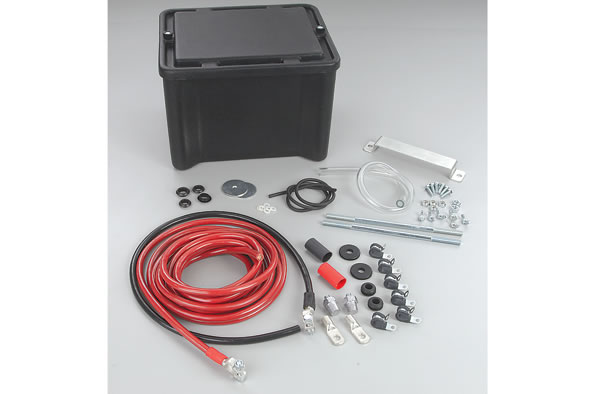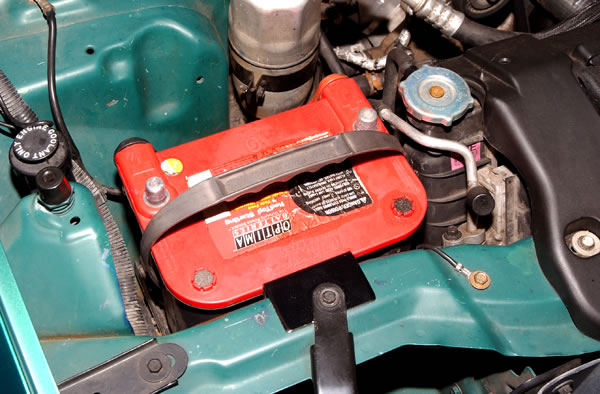Automotive batteries are hefty fellas. Many OE batteries check in at 40 pounds or more, and even “lightweight” racing batteries tip the scales at 20 pounds or so. While that might not seem like much weight to worry about, think about where it’s located. Yup, right up front with the engine—exactly where your rear-wheel drive vehicle doesn’t need it for maximum weight transfer at the track.
Mounting the battery in the trunk or truck bed gets weight off the front end of the vehicle and puts it over the rear axle. More weight over the axle plants the rear tires and improves traction. Furthermore, less weight up front allows the car’s front suspension to rise quicker, which further improves weight transfer to the rear tires.
Granted, moving 40 pounds of battery isn’t going to set your ETs on fire. But combine a relocated battery with suspension and traction upgrades, and a weight-reduction program (for the car, not you) and you’ll definitely notice an improvement on your time slip.
Summit Racing offers a quality battery relocation kit to make your move a no-brainer. It includes a vented, marine-grade battery box, one-gauge positive and negative battery cable, terminals, a battery hold-down, insulated clamps, vent tube, and hardware. The vented box is a nice feature—the vent tube runs from the box to the outside of the car, keeping battery acid fumes from building up and hastening your demise. The relocation kit is also NHRA- and IHRA-accepted for competition use.
We snapped photos at AutoDynamics in Akron, OH as they installed a Summit Racing battery box kit in a 1998 LS Camaro. It took them a couple hours to do, and that’s with us getting in the way. Since we won’t be around while you’re working, it should take you less time to move that battery out back.



















[…] shocks, and new M&H 275-60-15 rear tires. I even put Moroso front coil springs on the car and moved the battery to the trunk to help weight transfer. I also have polyurethane A-arm bushings and 90/10 front […]